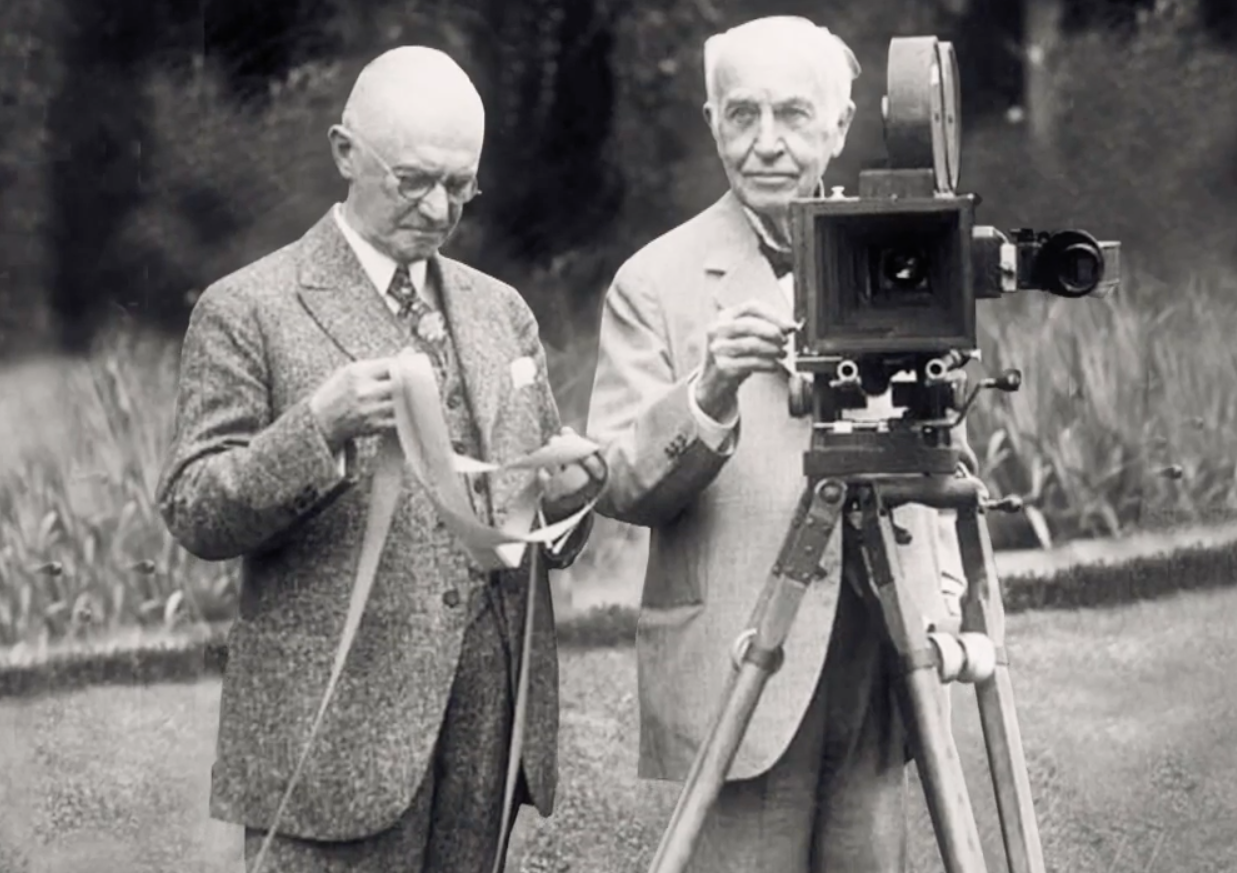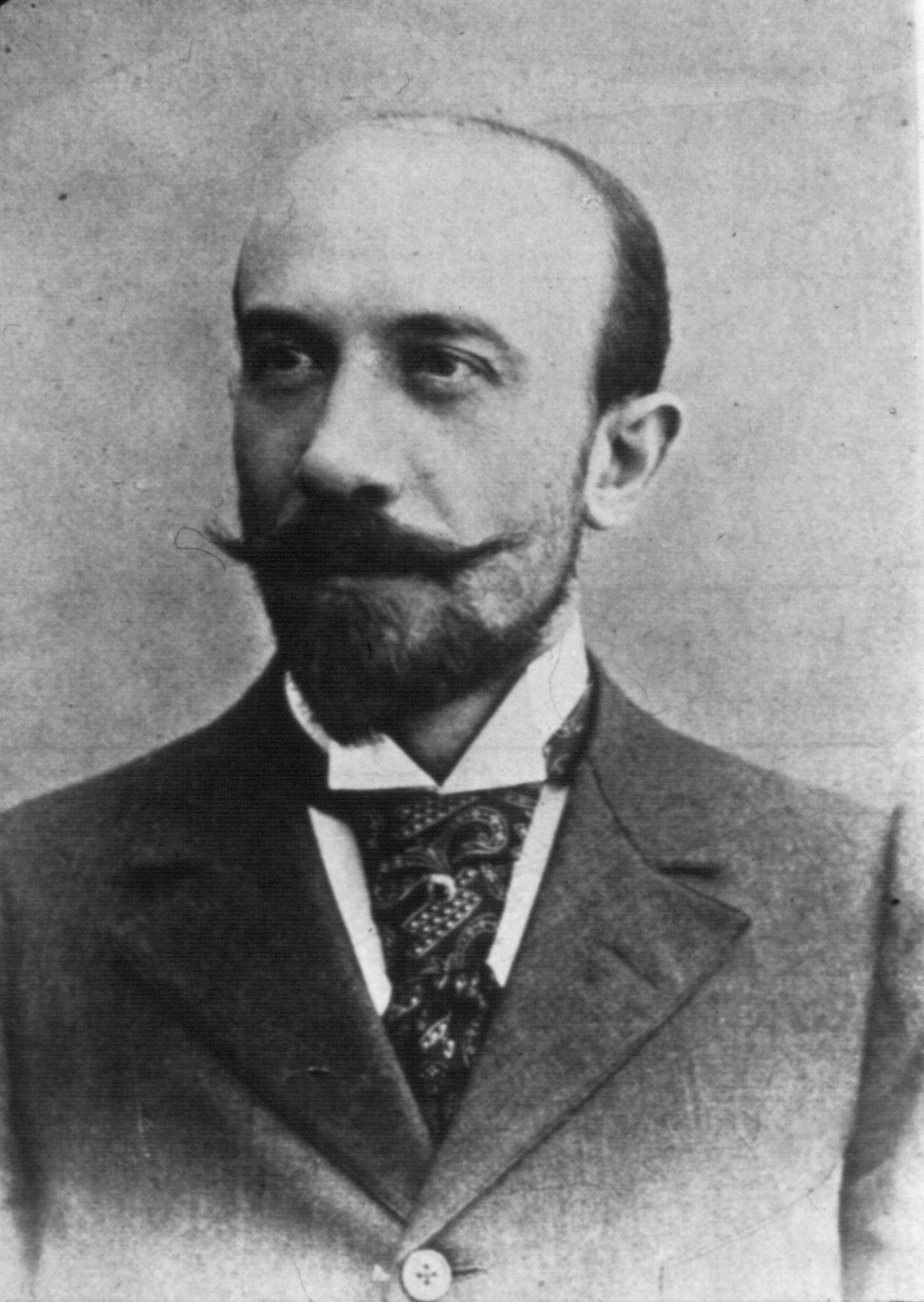Lumiere Brother:
 The Lumiere Brothers were French inventors that created the picture camera along with camera equipment. As they were both very technically minded they were able to make it. In their early years they worked for their father who had his own photographic firm. Louis was the physicist and Auguste was the manager. Their first private screening was in Paris in 1895 in the cafe Salon Indien du grand cafe. Their history making screening was 10 short films. These films were only seconds long, but they were long films for people in those days. However, they are nothing to the 2 hour, 3 hour films that we watch these days. Their father was a well known painter who turned into a photographer when cameras came around. This was the birth of the cinema.
The Lumiere Brothers were French inventors that created the picture camera along with camera equipment. As they were both very technically minded they were able to make it. In their early years they worked for their father who had his own photographic firm. Louis was the physicist and Auguste was the manager. Their first private screening was in Paris in 1895 in the cafe Salon Indien du grand cafe. Their history making screening was 10 short films. These films were only seconds long, but they were long films for people in those days. However, they are nothing to the 2 hour, 3 hour films that we watch these days. Their father was a well known painter who turned into a photographer when cameras came around. This was the birth of the cinema.
George Mêlées:
 George Mêlées was a famous illusionist and film maker. He is well known for putting techniques into films or special effects as they are known. By accident he discovered the stop trick effect, this is also known as the jump cut. Stop tricking is where you flip from one image to the other. This could be seen as cutting from one image to another. He made films like a trip to the moon (1902) and The impossible voyage (1904). These moves where strange and in the style of Jules Verne. They are also considered as the early science fiction films although they could be closer to fantasy films. He is also the inventor of horror films with his make of the film The hunted castle (1896). In his life time Melees make 500 films but due to it being old films some of them have been lost and you can only watch 200 of his films.
George Mêlées was a famous illusionist and film maker. He is well known for putting techniques into films or special effects as they are known. By accident he discovered the stop trick effect, this is also known as the jump cut. Stop tricking is where you flip from one image to the other. This could be seen as cutting from one image to another. He made films like a trip to the moon (1902) and The impossible voyage (1904). These moves where strange and in the style of Jules Verne. They are also considered as the early science fiction films although they could be closer to fantasy films. He is also the inventor of horror films with his make of the film The hunted castle (1896). In his life time Melees make 500 films but due to it being old films some of them have been lost and you can only watch 200 of his films.Edwin Porter:
 Edwin Porter was a famous producer, director, film maker and cinematographer. In his life time he has made 250 films. His greatest films include Jack and the Beanstalk (1902), life of an american fireman (1903) and lots more. Unlike the Lumiere brothers and George Melees his movies are longer. He also added drama into his work by actually filming real fires and footage in real fire station as it is real life stuff. Porters last ever premiered film was called Niagare Falls this was also the first ever Anaglyph 3D film. Anaglyph 3D is were they use two colours (these are normally two colours that are on the opposite sided of the colour wheel like red and cyan) as filters to an image. In his early years he worked for a company called Edison. He would redesign and tweak the companies equipment. He worked his way up through the company to filming movies that contained special effects and work with multiple scenes in them.
Edwin Porter was a famous producer, director, film maker and cinematographer. In his life time he has made 250 films. His greatest films include Jack and the Beanstalk (1902), life of an american fireman (1903) and lots more. Unlike the Lumiere brothers and George Melees his movies are longer. He also added drama into his work by actually filming real fires and footage in real fire station as it is real life stuff. Porters last ever premiered film was called Niagare Falls this was also the first ever Anaglyph 3D film. Anaglyph 3D is were they use two colours (these are normally two colours that are on the opposite sided of the colour wheel like red and cyan) as filters to an image. In his early years he worked for a company called Edison. He would redesign and tweak the companies equipment. He worked his way up through the company to filming movies that contained special effects and work with multiple scenes in them.
D.W. Griffin:
 Griffin was a famous American film director that is mostly famous for the films The Born of a Nation and the subsequent film Intolerance. The film The Born of a Nation was given bad publicity because it was seen as glorifying the KKK. The KKK were a group of people who hated black people and believed the white people were more supreme to black people. It cost him 110,000 dollars to make and in return he got a profit of millions back. In his life time he has roughly make 500 films. His final film was the struggle (1931).
Griffin was a famous American film director that is mostly famous for the films The Born of a Nation and the subsequent film Intolerance. The film The Born of a Nation was given bad publicity because it was seen as glorifying the KKK. The KKK were a group of people who hated black people and believed the white people were more supreme to black people. It cost him 110,000 dollars to make and in return he got a profit of millions back. In his life time he has roughly make 500 films. His final film was the struggle (1931).
 Griffin was a famous American film director that is mostly famous for the films The Born of a Nation and the subsequent film Intolerance. The film The Born of a Nation was given bad publicity because it was seen as glorifying the KKK. The KKK were a group of people who hated black people and believed the white people were more supreme to black people. It cost him 110,000 dollars to make and in return he got a profit of millions back. In his life time he has roughly make 500 films. His final film was the struggle (1931).
Griffin was a famous American film director that is mostly famous for the films The Born of a Nation and the subsequent film Intolerance. The film The Born of a Nation was given bad publicity because it was seen as glorifying the KKK. The KKK were a group of people who hated black people and believed the white people were more supreme to black people. It cost him 110,000 dollars to make and in return he got a profit of millions back. In his life time he has roughly make 500 films. His final film was the struggle (1931).
Eisenstein:
 Eisenstein was a soviet Russian film director and film theorist. He used to make silent films. His most famous silent films were Strike (1925), Battleship Potemkin and October (1928). He also made historical epics like Ivan the Terrible (1944- 46) and Alexander Nevsky (1938). His first ever movie was Strike made in 1925. He started working for Proletkult theatre, this is wear he produced plays like Gas Mask and Wiseman. He then went on to being a designer for Vsevolod Meyerhold. He started his career in theatre then moved onto cinema.
Eisenstein was a soviet Russian film director and film theorist. He used to make silent films. His most famous silent films were Strike (1925), Battleship Potemkin and October (1928). He also made historical epics like Ivan the Terrible (1944- 46) and Alexander Nevsky (1938). His first ever movie was Strike made in 1925. He started working for Proletkult theatre, this is wear he produced plays like Gas Mask and Wiseman. He then went on to being a designer for Vsevolod Meyerhold. He started his career in theatre then moved onto cinema.Soviet Montage:
Soviet Montage was a movement that began in 1924/5 and ended in 1930. During this movement about 30 films where made in this style and these films were influential film. One Eisenstein's film called Strike (1925), this was also on of this first films which he made when he was 26.
No comments:
Post a Comment